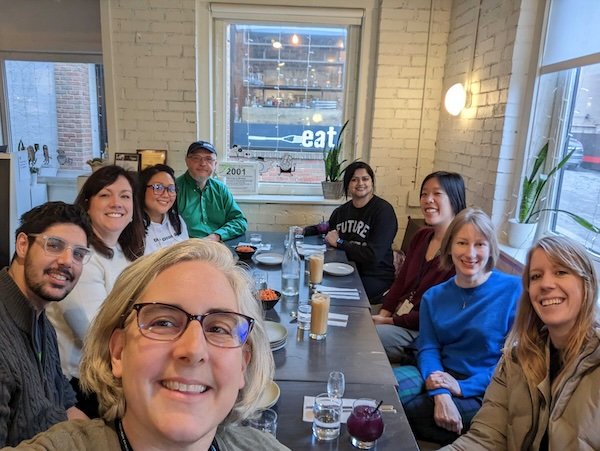Leadership Case Study
Building a Research Team to Scale
Challenge
I joined Duo Security as the second researcher within the Design organization and quickly discovered that our small team was a bottleneck for our Design and Product Management partners that wished to conduct research.
We needed to understand the key opportunities to empower our partners, free capacity for ourselves, and become known as strategic partners that informed key business and product decisions.
This became even more important after acquisition by Cisco Systems, where we joined a 5,000 person R&D group at Cisco Secure.
Process
Shortly after joining Duo Security, I conducted research on our organization to discover key areas Research could focus on to make an impact. My first step was to craft a survey for the Design team and conduct follow up interviews informed by survey data.
This process allowed me to see overarching patterns and have conversations with team members about why these pain points were occurring. I synthesized the data and reported opportunities to the team.
Findings
Through the research I saw some key pain points that would be impactful if solved:
Poorly Managed Customer Outreach. Designers across the team were reaching out to customers for their own research, sometimes contacting the same customers over and over again. For customers, they had a poor interaction with the company as they were bombarded with requests. For us, it created a long timeline to recruit study participants.
Designers did not have confidence to conduct common research methods. As a result, they wanted researchers to conduct interviews and usability tests, which overloaded researchers and delayed study completion. Research had to prioritize our work to the areas of most uncertainty and risk, so depending on the decisions it would inform, we could not always allocate time to a usability study.
Siloed Research. Research results were delivered within project teams and not shared with the larger Design or R&D organization. It was difficult to track the research that was happening and if it was following best practices. This also meant that individual studies were not inform long-term foundational knowledge.
Members of the Duo Security Research team
Outcome
As a result of this work, I made recommendations for areas to empower our partners and boost the quality of the research.
Create a standard process for tracking customer outreach and train the team. They needed education on the how as well as why this process was critical to maintaining and building a customer recruitment pipeline.
Create clear criteria for project prioritization
Create open office hours for our design, engineering, and product management partners to get consulted on their projects. This was beneficial in two ways: we could inform research best practices and gain awareness of research projects. This allowed us to track work and connect teams doing related work.
Build templates and tip sheets for the common research activities identified through the organizational research: conducting interviews and usability tests. We also opened up opportunities for designers to shadow, execute, and receive coaching to improve their skills and comfort level.
Build and deliver trainings for common research activities to boost confidence of our designers, as well as encourage good data collection.
These allowed us to scale our work and encourage collection of strong data with designers and product managers who were having customer conversations and removed us as a bottleneck.
This work also made a compelling case to hire our first Research Operations coordinator. Her work allowed us to systemize and streamline the customer contact process. She handled the logistics of scheduling participants and created governance for our customer database.
When I became a manager, I was able to make the case for more research operations hires by reporting the return on investment from the first hire. Later, as Cisco Secure Research began to centralize, I leveraged this data to help build a proposal with my Cisco Research leader peers to help make a case for additional Research Ops hires, as well as other process improvements.
Over time, the office hours became another conduit for us to build strong relationships across disciplines. Design, Engineering and Product Managers would drop by to see how Research could get involved and get advice on their projects. As they had more exposure to the value our point of view brought, they became champions for the Research team’s involvement in projects.
Continuous Iteration and Evolution at Duo and Cisco
A Duo Research sticker sheet made by Research team members
When I managed the research team, I conducted a team visioning workshop every year. This annual tradition generated ideas to grow the maturity of our practice. Over the course of the fiscal year, I would incorporate these initiatives into our quarterly OKRs.
The team was focused on product roadmap work, but I continued to create space for team members to work on projects that would continue maturing and scaling our practice. This built a high-performing team with outsized impact, strategic relationships, and empowered partners.
When Cisco Secure Research centralized, I strategized with my Cisco Secure Research leader peers on how best to leverage and share insights across teams to inform product decision-making. This led to strategic partnering of researchers on projects, R&D-wide presentations in partnership with product and engineering leaders, and introductions of new tools such as GreatQuestion. Together, we defined, collaborated, and delivered on goals to create a culture of customer curiosity at Cisco.
Some members of the Cisco Secure Research Team


